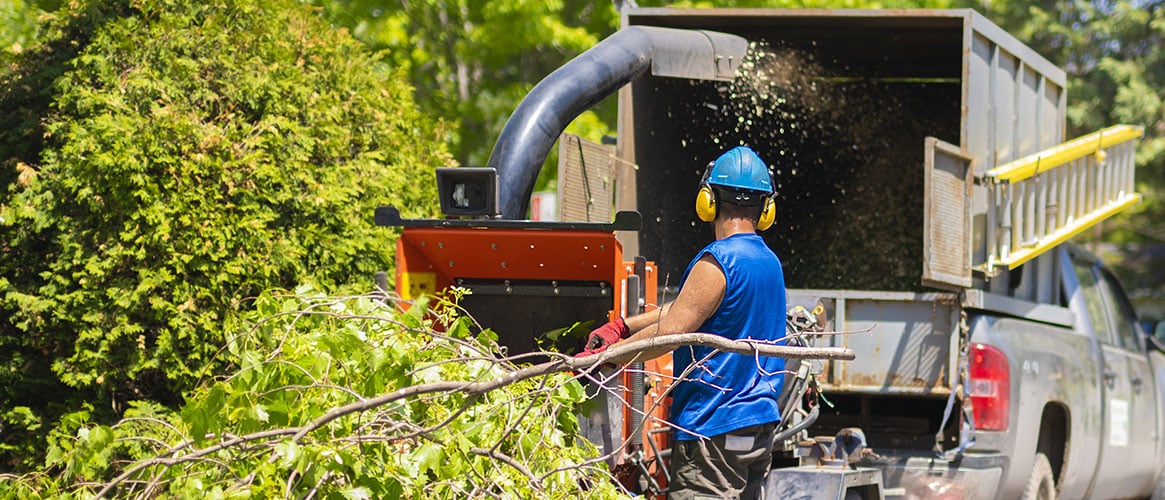Mobile wood chippers chop up branches and trunk pieces from tree trimming operations. Workers feed materials through a hopper where the materials are grabbed by a feed mechanism. The materials then pass under rotating chipper knives moving at rates of 1,000 and 2,000 rpm until the tiny pieces are discharged out of the machine. Wood chippers can cause serious or fatal injuries, so extreme caution and following safe work practices are critical.
What your employees need to know about using a wood chipper
Two-thirds of wood chipper-related fatalities occur when workers get caught and crushed by the chipper feed mechanism and/or get pulled into the cutting knives. Some of the ways this happens include a worker getting entangled in tree branches, trying to push short branches and debris into the hopper, or clearing jams when the machine is still operating.
The remaining one-third of chipper fatalities occur when workers get struck by chipper hood guards, which can fly off forcefully if they are opened or closed while the chipper knives are rotating. It’s important to remember that the machine’s knives should come to a complete stop before anyone opens the chipper hood.
In addition to the fatality causes, injuries can result from flying wood chips and the noise generated by the machine.
What your employees need to do to avoid injury when using a wood chipper
Before use, inspect the chipper hood for missing pins or cracked, worn hinges. Ensure the hood is properly latched closed and completely covers the knives. Start the chipper at the lowest speed and listen for sounds of loose or broken parts.
Keep the work area around the wood chipper machine clear and free from tripping hazards to avoid falls into the hopper. Rake up small debris like twigs and leaves and place them directly into the trailer or a bag for disposal. Follow the chipper manufacturer’s recommendations for the safest position to stand when feeding limbs into the hopper. Other steps include:
- Feed the trunk or “butt end” of branches into the hopper first.
- Lay short branches on top of longer branches, or use a long branch to push materials into the hopper.
- Avoid reaching into the feed area to push small debris into the hopper. Once the feed mechanism has grabbed the materials, let go and allow the feed mechanism to draw the materials into the cutting knives.
When operating a chipper, wear close-fitting clothing, cuff-less gloves, and cuff-less trousers to help prevent getting caught in the machine. Keep clothing tucked in. Personal protective equipment (PPE) also includes ear protection to help guard against hearing loss, safety goggles to protect the eyes, and a hard hat to guard against being struck by either flying or moving objects.
Other safety steps include:
- Tie back your hair.
- Remove jewelry.
- Keep the hands and feet outside the hopper at all times.
- Know what coworkers are doing and where they are—working with a buddy ensures that help is nearby if an emergency occurs.
- Do not allow workers under the age of 18 to operate a chipper.
What to cover at your safety meeting about using a wood chipper
Demonstrate how the equipment works and review the operator’s manual with your employees. This includes:
- How to open and close the hood.
- How to clear jams.
- How to feed branches into the chipper.
- How to perform safety checks before use, such as making sure no parts are loose or missing.
- How to identify the proper clothing and PPE.
Wood chippers are convenient and effective machines to help clear the area quickly after tree trimming and tree felling operations. Talk to your employees today about the safe use of the machine and provide regular training to help them reduce the risk of injury.

